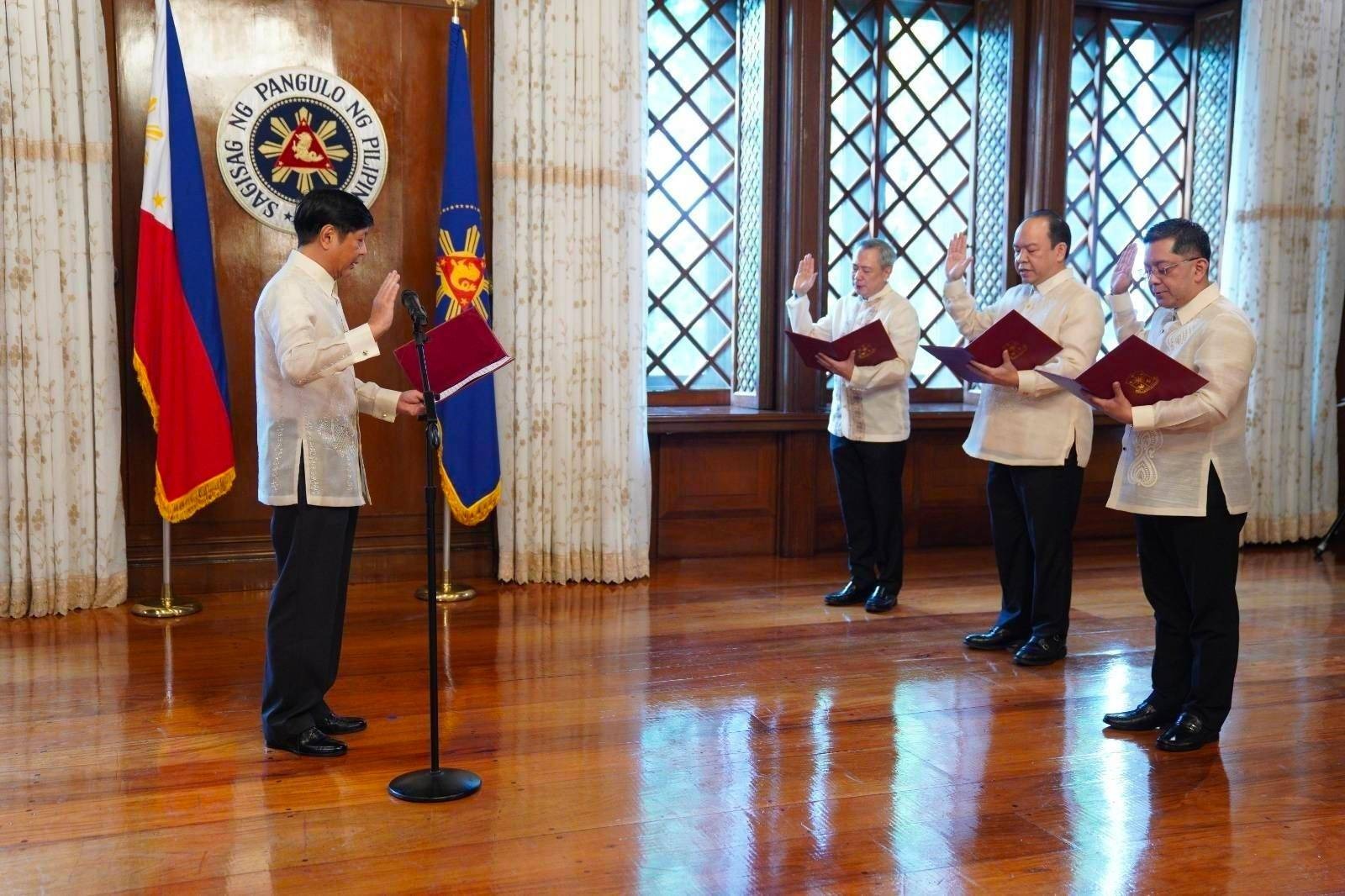Rizal’s ‘Josephine Sleeping’ now at National Museum, museums now open 7 days a week, free admissions continue
Good news to Filipinos who take pride in the country’s culture, history, arts and treasures!
The National Museum of the Philippines (NMP), the repository of works of art, specimens, cultural and historical artifacts representative of the unique cultural heritage of the Filipino people and the natural history of the Philippines,is now open to the public seven days a week.
This was announced by NMP deputy director general for museums Jorell Legaspi during the unveiling of national hero Jose Rizal’s artwork “Josephine Sleeping,” inspired by his wife Josephine Bracken, at the National Museum of Fine Arts in Manila on Rizal Day, Dec. 30.
Previously, the NMP closed on Mondays for cleaning of the premises and maintenance of the museum’s collection, Legaspi said.
Legaspi said admission to the NMP complex in Manila will remain free to guests.
The NMP Complex is composed of the National Museum of Fine Arts which is housed in the iconic old Congress building designed by Juan Arellano along Padre Burgos Drive and the National Museum of Anthropology in the former Department of Tourism building and the National Museum of Natural History in the former Department of Agriculture and Finance building at the Rizal Park.
Fifteen (15) other museums under the NMP watch across the country would remain free of charge to visitors, as it has been since 2016.
Nationwide, the NMP welcomed “close to three million visitors” in 2024, almost two million of which visited the NMP complex in Manila, he added.
Legaspi thanked the Marcos administration, its supporters in Congress and other stakeholders “for supporting the ongoing growth and strengthening of the NMP.”
He also disclosed that the NMP is set to open this year three new museums in Clark, Pampanga; Baler, Aurora and Davao City.
The proposed NMP Clark Museum will be located in what used to be the Clark Air Base Hospital, which Legaspi described as a “haunted hospital.”
The then hospital was used during World War II and the Vietnam War, when many soldiers died, according to online resources.
Earlier, in commemoration of the martyrdom of Dr. José Rizal, the National Museum exhibited for the first time Rizal’s opus, a clay sculpture called “Josephine Sleeping.”
Made during his exile in Dapitan, “Josephine Sleeping” offers an intimate glimpse into the humanity and personal lives of Dr. Rizal and his last love Josephine Bracken, the NMP said.
The clay sculpture, dubbed as “Rizal’s Mona Lisa,” is believed to be a memento intended to be kept close to its creator. It traces its provenance to the heirs of Dr. Rizal’s sister Narcisa and is now part of the National Fine Arts Collection.
As one of the leading members of the Filipino propaganda movement in the late 19th century, Rizal promoted nationalist sentiments through his novels, writings on Philippine history and culture, scientific pursuits, civic education and engagement, and artistic works.
Sentenced to death by colonial authorities for allegedly inspiring the 1896 Philippine Revolution, Rizal made a last act of love to Josephine when he married her in his death row cell in Intramuros a few hours before his execution at Bagumbayan on December 30, 1896.
The museum features Rizal’s masterpiece, “Spolarium,” at the Spoliarium Hall and other artworks in Gallery V “Inspiring the Nation, Dr. Jose Rizal: The National Hero in Art”.
The museum said “Josephine Sleeping” is the newest addition to its Rizaliana which highlights its desire to dedicate the Central Complex in Manila to the legacy of Dr. José Rizal whose life and works cover the fields of arts, anthropology, and natural sciences – areas that the NMP has been tirelessly working on since its inception.
On December 1, the National Museum opened its component museum in Davao in partnership with the City Government of Davao. This is the NMP’s 17th regional component museum and its fourth in Mindanao.
NMP Davao is housed in a six-story durian-inspired structure, an architectural tribute to one of Davao region’s most beloved agricultural products. It is now home to exhibitions featuring natural history, cultural and historical artifacts, Mindanao’s priceless treasures, the artistry of indigenous textiles, and masterpieces by some of Davao’s best artists.
On the ground floor, visitors will be greeted by Kublai Millan’s monumental installation “Ahungan ng Pagkakaisa”. Inspired by the traditional musical instrument of the Tagakaolo people, also known as tangungu in Bagobo, this centerpiece was masterfully crafted by over 50 skilled Manobo weavers, signifying the power of the community. Soon to be displayed in the museum lobby is a loan from the Bangko Sentral ng Pilipinas Collection. “Davao Industries” is a stellar artwork by National Artist Victorio Edades, who spent his retirement years in Davao City. Artworks by Dabawenyo artists also adorn this floor.
The exhibitions on the second floor feature specimens and images that celebrate Davao region’s natural landscape, from its geologic history and transformation to its flora and fauna. Crowning Davao’s staple Philippine Eagle display are in-depth installation showing its forests, mountains, land and water forms, and rich biodiversity.
Traditional life rituals as well as the region’s archaeological heritage are exhibited on the third floor. Being a melting pot of ethnic expressions among the Lumads, Moros, and migrant settlers, the mountainous terrains and the rivers and seas continue to shape communities across historical periods, especially through trade, warfare, and even in the conduct of their daily lives. Material evidence of the origins of death-related practices, prevalent among various indigenous people groups, can also be viewed on this floor, offering viewers a deeper understanding of our long-held beliefs in the afterlife.
Expressions of local artistry comprise the exhibitions on the fourth floor. The textile exhibition focuses on the clothing of the different indigenous and cultural communities in Mindanao. Researched and curated in partnership with the Office of Senator Loren Legarda and the National Commission for Culture and the Arts, this exhibition is part of the Hibla ng Lahing Filipino Program, making NMP Davao its seventh regional gallery. It also honors the lives and works of master textile weavers from Mindanao who were recognized as Manlilikha ng Bayan or National Living Treasures. Also on the same floor is a special exhibition on the legacy of Davao-born National Artist Ang Kiukok, an influential figure in Philippine modern art.
NMP Davao is located at People’s Park Compound, J. Palma Gil St., Brgy. 4A Poblacion District, Davao City.


















